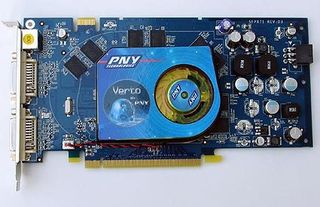The GeForce 7900GS is Nvidia's New Mid-Range
The Graphics Landscape

The quest for a better DirectX 9 graphics card has been going on for two years now, and we have seen a lot of strides taken to improve the performance of graphics cards in that time. It was in 2004 that the first Shader Model 3.0 graphics capabilities appeared on the scene. However, it wasn't until later that year that GeForce 6600GT arrived, delivering SM 3.0 to the mainstream gamer.
The tradition of adding cards to fill price segments continues, as Nvidia announces a couple of new cards: the GeForce 7900GS and GeForce 7950GT. While the 7950GT is not available until the 14th of September, we got the GeForce 7900GS in house for a round of testing. Here's what we found...
Introducing GeForce 7900GS

As new cards enter the market, the previous entries at particular cost levels are replaced, and this is the scenario for the GeForce 7900GS. The GeForce 7800GT has a replacement with a better, nicer price tag, and - as our benchmark results show - more bang for the buck. These cards are being introduced between $200 and $250, which brings the competition with the ATI Radeon X1800GTO to a whole new level.
In our VGA charts we have shown that the Nvidia GeForce 7800GT is superior in performance to the Radeon X1800GTO. The price difference between the cards was $80, but that is now in the past - the new GeForce 7900GS is both cheaper and superior in performance. Later, in our tests, you will see that it even beats the GeForce 7800GT, so not only does it come in at a sweeter price point, it packs a punch, too.
Quiet, Please!
To make things better still, Nvidia heard the cries of its constituents and designed a better cooler for the GeForce 7900GS. While the heatsink itself is no different than the one on the GeForce 7900GT, the fan is a winner. Nvidia also enabled variable speed fan control on both of the new cards, so gamers will no longer have to hear the whine of a fan as it spins at high speed. In fact, the only time we heard it was under long-term use while looping 3DMark05, when the fan needed to ramp up under the excess heat of this torture test.

Join our discussion on this topic
Stay on the Cutting Edge
Join the experts who read Tom's Hardware for the inside track on enthusiast PC tech news — and have for over 25 years. We'll send breaking news and in-depth reviews of CPUs, GPUs, AI, maker hardware and more straight to your inbox.
Most Popular

